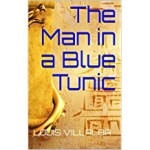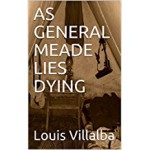
As soon as the procession had passed our balcony, we rushed outside to witness its arrival before the local jail, the Royal Prison, a block away. The neoclassic stone building boasted small, barred windows and an impressive entrance with four marble columns. The inscription on its façade read: “Hate crime but be compassionate with the offender.” It was customary to release a prisoner to commemorate the yearly procession. This man’s face was one of joy as the guards freed him. Yet his eyes shone with sadness and anger. No, God would not look like him.
Once the procession approached Santa Maria Chapel, its destination, a crowd blocked the last hundred yards of the official itinerary. The faithful scrambled to postpone the end of the religious parade for fear of their upcoming apprehension—as strong as the unholy withdrawal from a potent drug—which would overtake them as soon as the float carrying the Nazarene crossed the threshold of the main chapel door amidst the cadence of the Spanish national anthem. It would mean the end of that year and the beginning of a drawn-out countdown until the next Holy Week. They were not about to allow it, not yet. Other volunteers replaced the worn-out cargadores underneath the float and, ignoring diocesan regulations, turned it around, swinging and moving it along the road with such grace that the figure of the Nazarene seemed to be walking. They carried it back to meet that of Our Lady. The latter had trailed behind and was before the Royal Prison, about two hundred yards away.
After placing the two images in front of each other, they rocked them to the rhythm of the trumpets and drums as if at a pagan ritual dance. The crowd broke into applause and cheers. Everyone’s faces bore signs of exultation. But even here, I could not see God anywhere. I was disappointed. The scenery might have been perfect for the facial features of God to have become visible to my eyes:
The sea waters spread over the rocks with layers of white foam.
The silvery glade of the moonset undulated on the surf.
The soft sea breeze wafted into the plaza and narrow streets next to the chapel.
The twilights of dawn cast a delicate pink veil upon the horizon.
The cathedral’s yellow dome gleamed under a twinkling sky.
Yet neither Mother Nature’s nor artificial creations were enough for Him to show His face. After a while, the procession finally came back to its temple, where it had begun ten hours earlier. The place was packed. Emotions surged to a crescendo. Taking turns, several people burst into singing saetas—flamenco religious songs—as the image paraded along the final stretch.
From “The Silver Teacup” by Louis Villalba
This passage is based on my childhood experience and is part of the short story “An Errand for God.” The crowds have changed over the years. Some people show devotion and pray, understanding the representations on the floats. Some admire the extraordinary beauty of their images, the way they are paraded, the music and the excitement surrounding them, applauding and whistling their jubilation. Many enjoy the processions as a religious festival, smoking, eating, and chatting as the portable altars pass. One expects these reactions in a country no longer Catholic, for the state has no official religion.


































